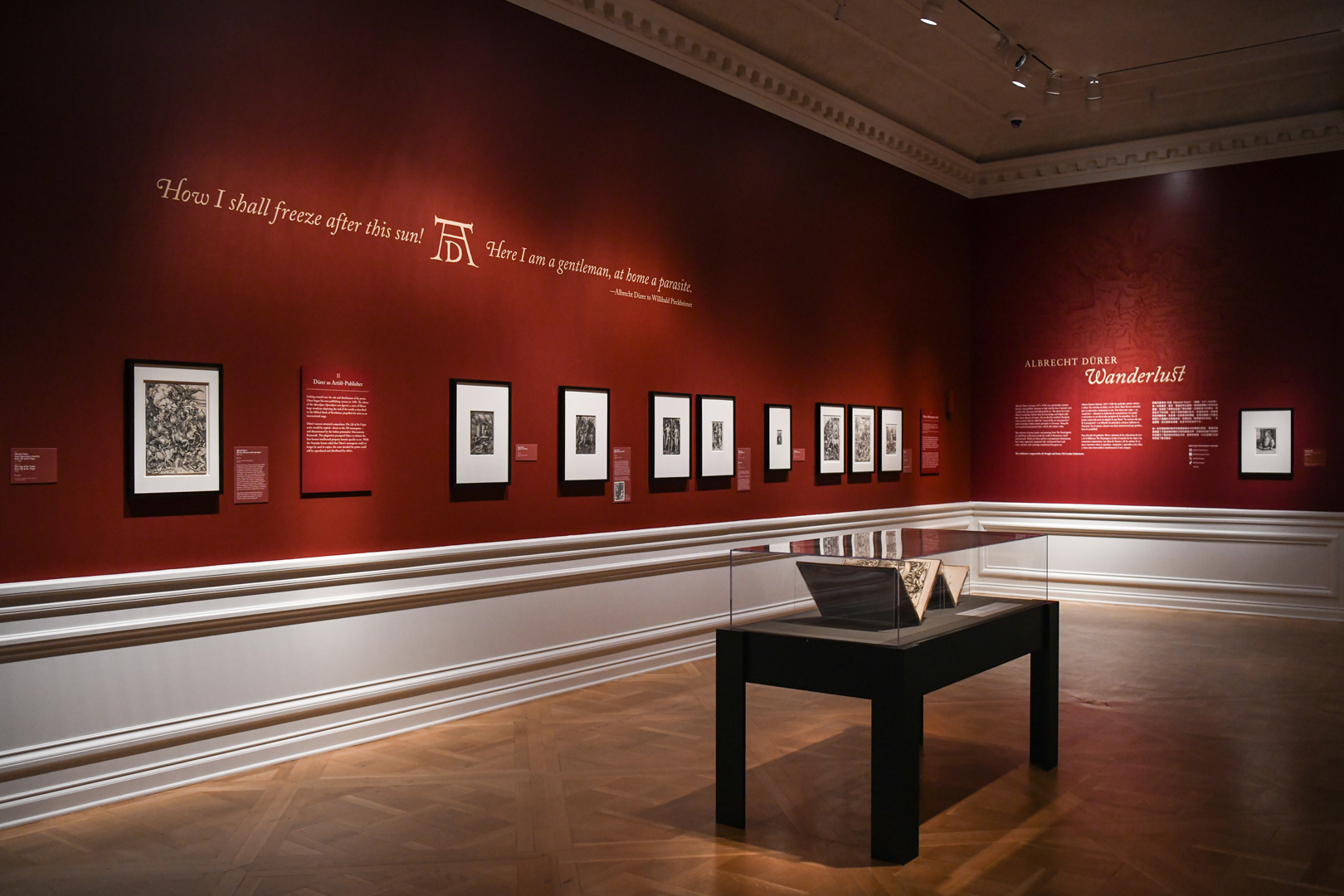
Installation view of “Albrecht Dürer: Wanderlust.” Photo by Linnea Stephan. | The Huntington Library, Art Museum, and Botanical Gardens.
The impact of artistic networks takes center stage in an exhibition now on view in the Huntington Art Gallery—with a look at how networking was done more than 500 years ago, starring the renowned German Renaissance printmaker and painter Albrecht Dürer (1471–1528).
In fact, it was Dürer’s travels to Italy and beyond that would shape him as an artist, and his influence on artistic contemporaries would indeed transform European art. “Albrecht Dürer: Wanderlust”—on view through Sept. 23, 2024—illuminates Dürer’s art, and his reach, through prints, books, and paintings drawn from The Huntington’s collections and explores the cultural networks within which he operated.
The 1645 print below, made by Bohemian artist Wenceslaus Hollar, is an engraving copied from Dürer’s 1498 self-portrait, painted when he was in his late 20s. Dürer’s self-assured expression alludes to his positioning himself as a rising international artist on the cusp of the 16th century. His Italianesque cap and clothing, clasped hands inside soft leather gloves, long curly locks of hair, and slight goatee suggest that he saw himself as a cosmopolitan gentleman, even though he was the son of a goldsmith.
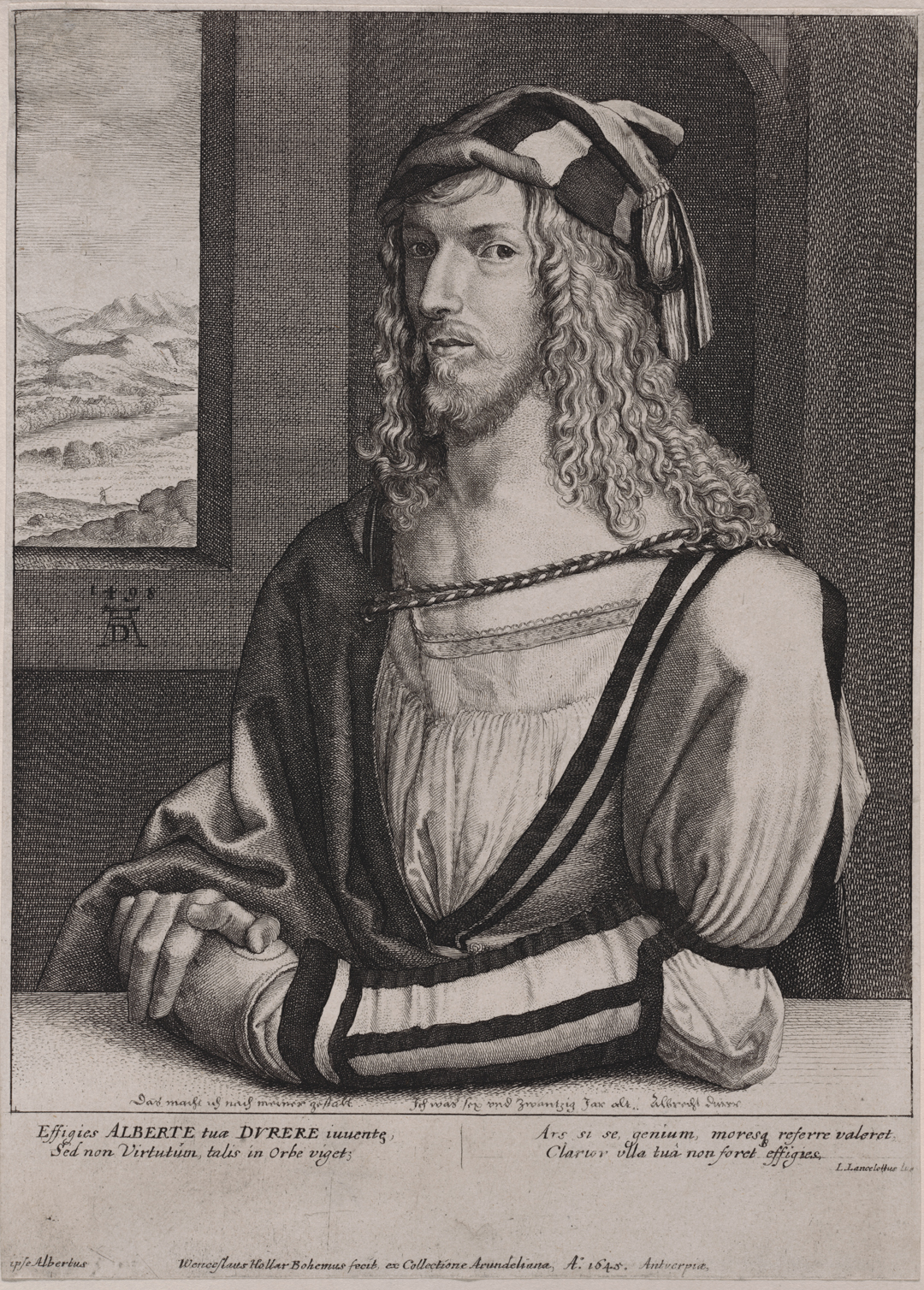
Wenceslaus Hollar, Albrecht Dürer, 1645 (after Albrecht Dürer, Self-Portrait, 1498), engraving. Gift of Mrs. Homer D. Crotty. | The Huntington Library, Art Museum, and Botanical Gardens.
Born in Nuremberg, Germany, Dürer initially trained with his father, but at 15 he became an apprentice in the busy workshop of painter and printmaker Michael Wolgemut. There, Dürer began to learn the art of printmaking, following Wolgemut’s designs and contributing to his book publications, such as the famous Nuremberg Chronicle (1493), a richly illustrated compilation of historical accounts drawn from ancient and contemporaneous sources.
Dürer first traveled to Italy in 1494–95. Few details are known about this initial trip, during which he spent the winter in Venice, studying the works of Venetian masters. After returning home, he produced a series of 15 woodcuts depicting scenes from the biblical book of Revelation, including his well-known The Four Horsemen of the Apocalypse.
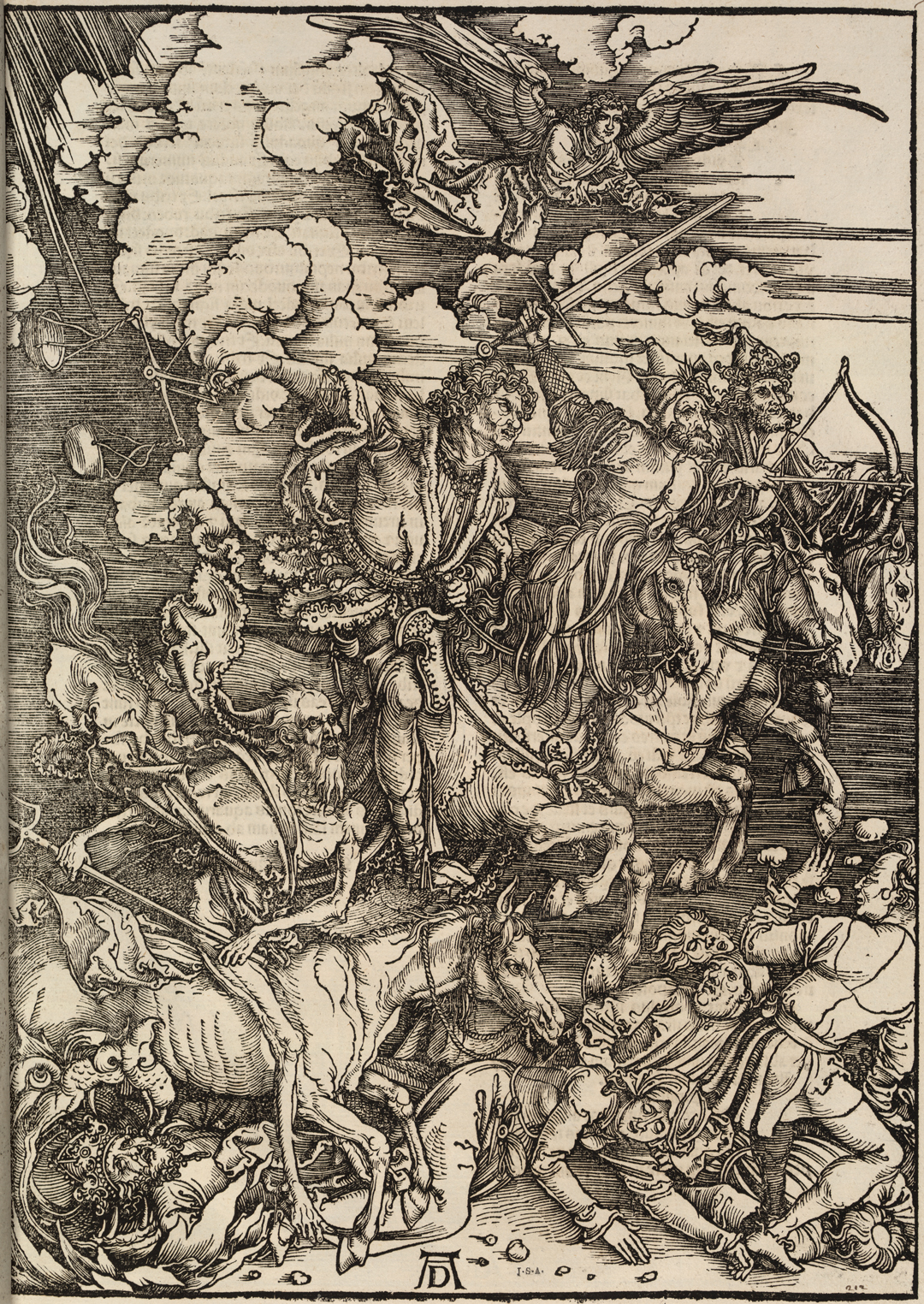
Albrecht Dürer, The Four Horsemen of the Apocalypse, 1497–98, woodcut. Edward W. and Julia B. Bodman Collection. | The Huntington Library, Art Museum, and Botanical Gardens.
This iconic print, ferocious in line and subject, dramatizes the coming of the end of the world. Created more than 500 years ago, during a period of increasing social, religious, and political unrest in Germany, it is perhaps one of the most powerful testaments to the artist’s enduring appeal. The four horsemen—personifying (from right to left) Plague (or Conquest), War, Famine, and Death—trample church, state, and the general population underfoot, reflecting the resentment and discontent brewing against imperial and religious authorities around 1500. The monstrous Hellmouth at bottom left devours the emperor, identified by his crown, and Famine’s galloping stallion is set to crush a clergyman.
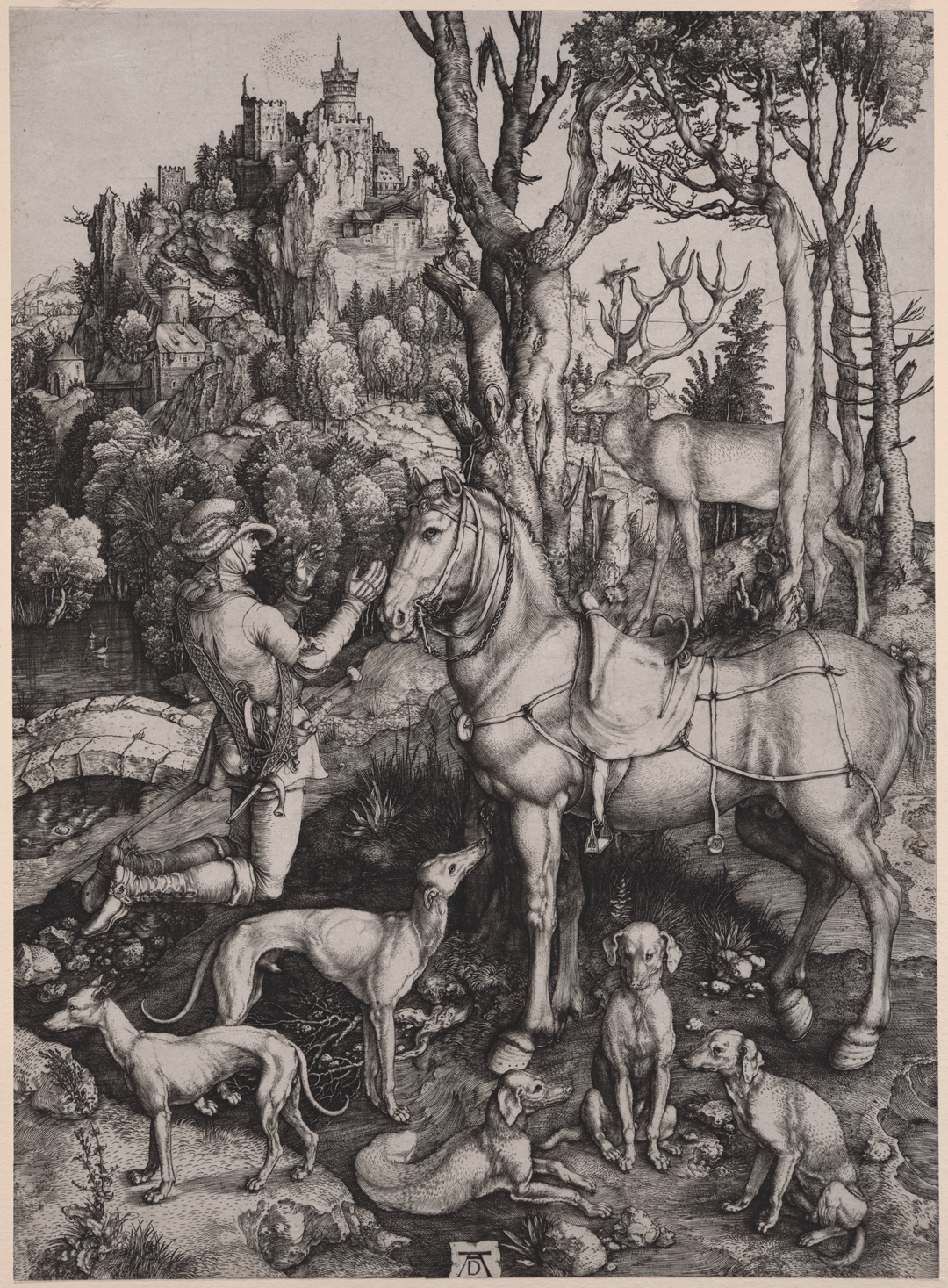
Albrecht Dürer, St. Eustace, 1501–05, engraving. Edward W. and Julia B. Bodman Collection. | The Huntington Library, Art Museum, and Botanical Gardens.
Dürer’s skills as a printmaker revolutionized the art of his time. His ability to create a range of effects using only black lines proved unmatched. In St. Eustace, for example, Dürer employed an engraving tool, called a burin, to depict a remarkable variety of forms: the forest landscape, craggy boulders, and castle architecture; the floppy ears and sleek coats of hunting hounds; and the stallion whose serene, knowing expression indicates a miraculous event has occurred. St. Eustace, previously named Placidus, was a Roman general in the army of the emperor Trajan. The engraving depicts the moment when, according to legend, the future saint encountered a vision of the cross while hunting a stag—an event that precipitated his conversion to Christianity.
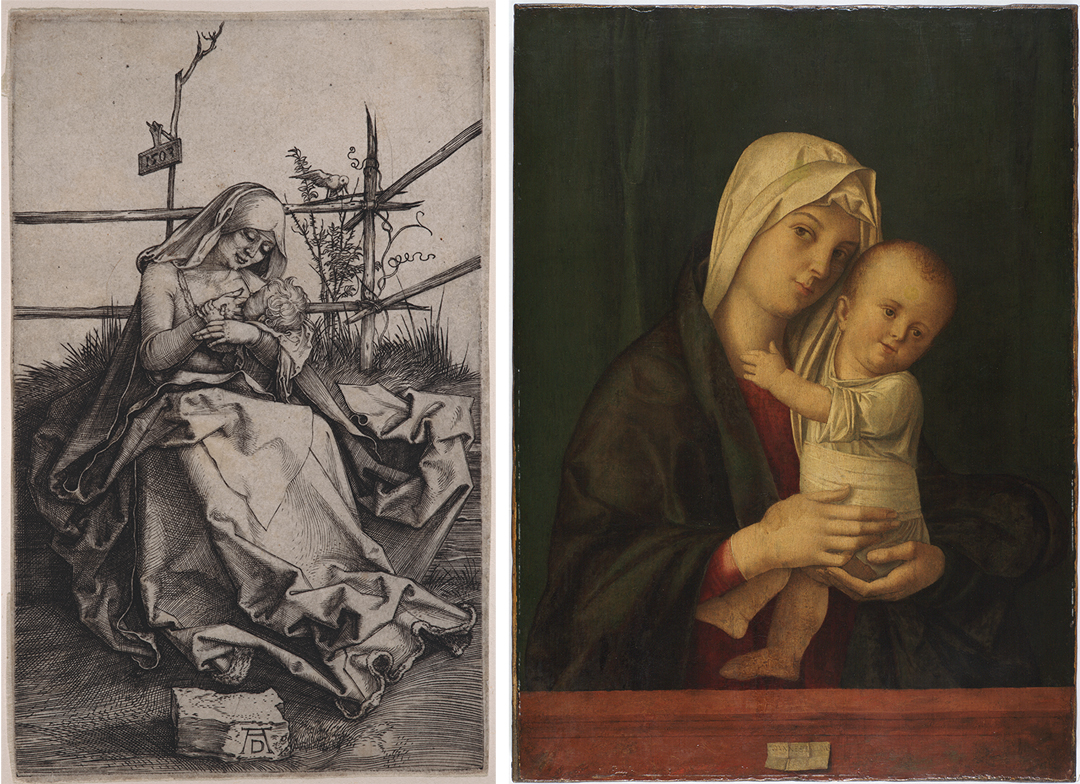
Left: Albrecht Dürer, Virgin on the Grassy Bank, 1503, engraving. Edward W. and Julia B. Bodman Collection. Right: Giovanni Bellini, Madonna and Child, ca. 1489, oil on canvas. The Arabella D. Huntington Memorial Collection. | The Huntington Library, Art Museum, and Botanical Gardens.
While Dürer’s skills and techniques influenced his artistic contemporaries, his travels had an indelible influence on his own artistry and even his self-image. During a second and final visit to Italy in 1505–07, Dürer wrote from Venice to his friend Willibald Pirckheimer in Nuremberg: “How I shall freeze after this sun! Here I am a gentleman, at home a parasite.” In Venice, he met Giovanni Bellini, whom he praised as “the best painter of them all.” Dürer’s humble engraving titled Virgin on a Grassy Bank corresponds to Bellini’s earlier domestic altarpiece painting Virgin and Child, as both pieces present simplified backgrounds, focus on the central figures, and capture the comforts of motherhood.
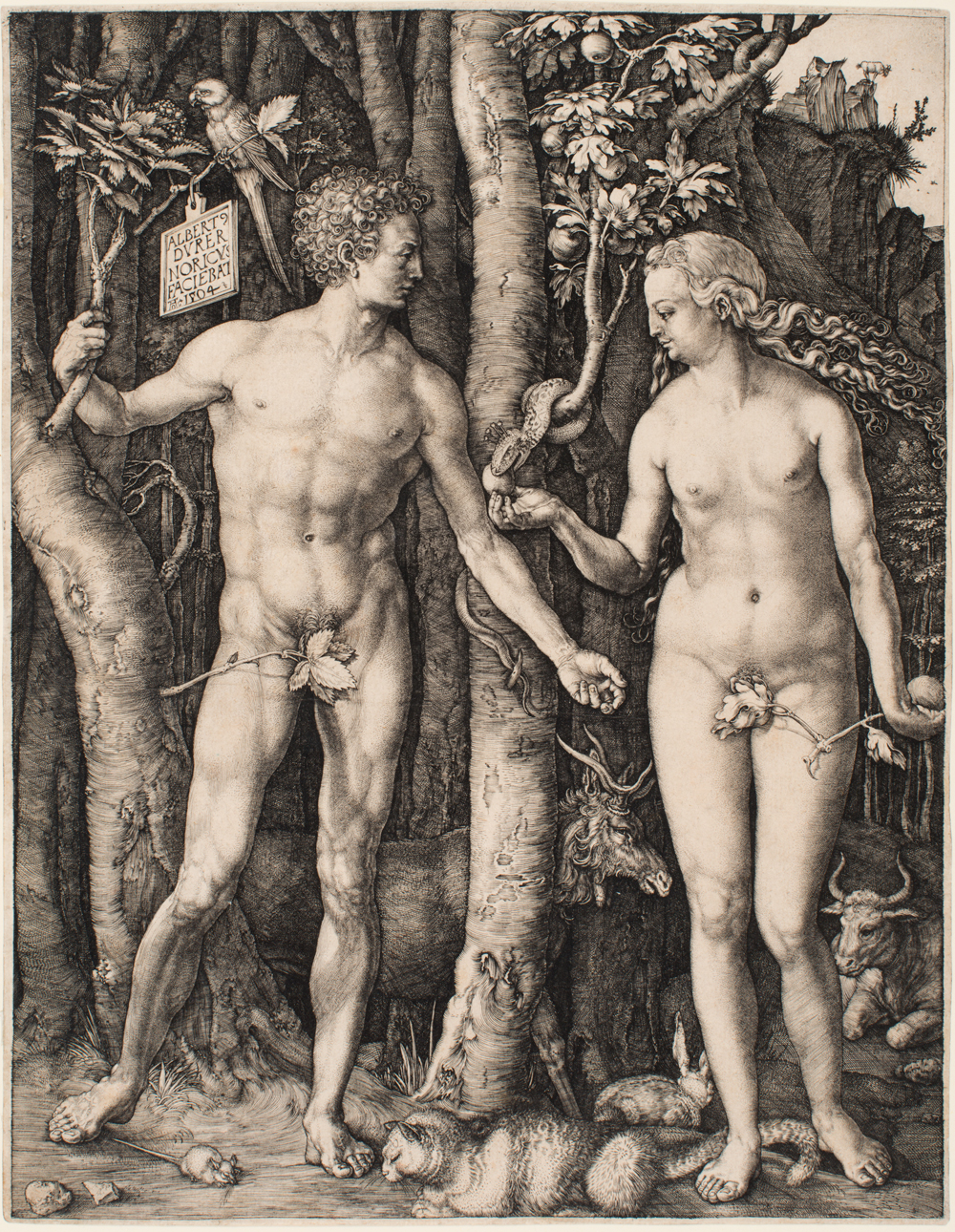
Albrecht Dürer, Adam and Eve, 1504, engraving. Edward W. and Julia B. Bodman Collection. | The Huntington Library, Art Museum, and Botanical Gardens.
Dürer engrossed himself in the “canon of human proportions” by studying the works of the ancient Roman writer Vitruvius and the northern Italian artist Andrea Mantegna, whose engravings of muscular bodies Dürer would emulate. Dürer’s engraving of Adam and Eve, standing in classical contrapposto poses, presents the Bible’s first man and woman as having ideal proportions and living in a northern European paradise.
Italy was also a source of deep aggravation for Dürer. His rivals and followers copied his woodcuts and engravings or incorporated elements from them in their work. In another letter to Pirckheimer, the artist complains about the Italian painters who “copy my work in the churches and wherever they can find it.” Part of the reason for Dürer’s second trip to Italy may have been to appeal to the Venetian Senate, requesting that it put a stop to the copying of his prints by the engraver Marcantonio Raimondi. The Senate’s final ruling called for Dürer’s “AD” monogram—visible in his Marriage of the Virgin (below) and other works—to be removed from all unauthorized copies. Yet his designs could still be reproduced and sold by others.

Albrecht Dürer, Marriage of the Virgin from The Life of the Virgin, 1510, woodcut. Edward W. and Julia B. Bodman Collection. | The Huntington Library, Art Museum, and Botanical Gardens.
Livid over the situation, Dürer included a warning at the end of his 1511 edition of The Life of the Virgin:
Beware, you envious thieves of the work and invention of others, keep your thoughtless hands from these works of ours. We have received a privilege from the famous Emperor of Rome, Maximilian, that no one shall dare to print these works in spurious forms, nor sell such prints within the boundaries of the Empire … printed in Nuremberg, by Albrecht Dürer, painter.
After returning from Italy, Dürer set about perfecting his art, incorporating what he had learned from his travels and artist-friends. From 1507 to 1512, he produced a set of 15 copper engravings of Christ’s suffering, plus a print completed in 1513 featuring saints Peter and John. Collectively known as Engraved Passion, the series was last presented in its entirety at The Huntington a decade ago.
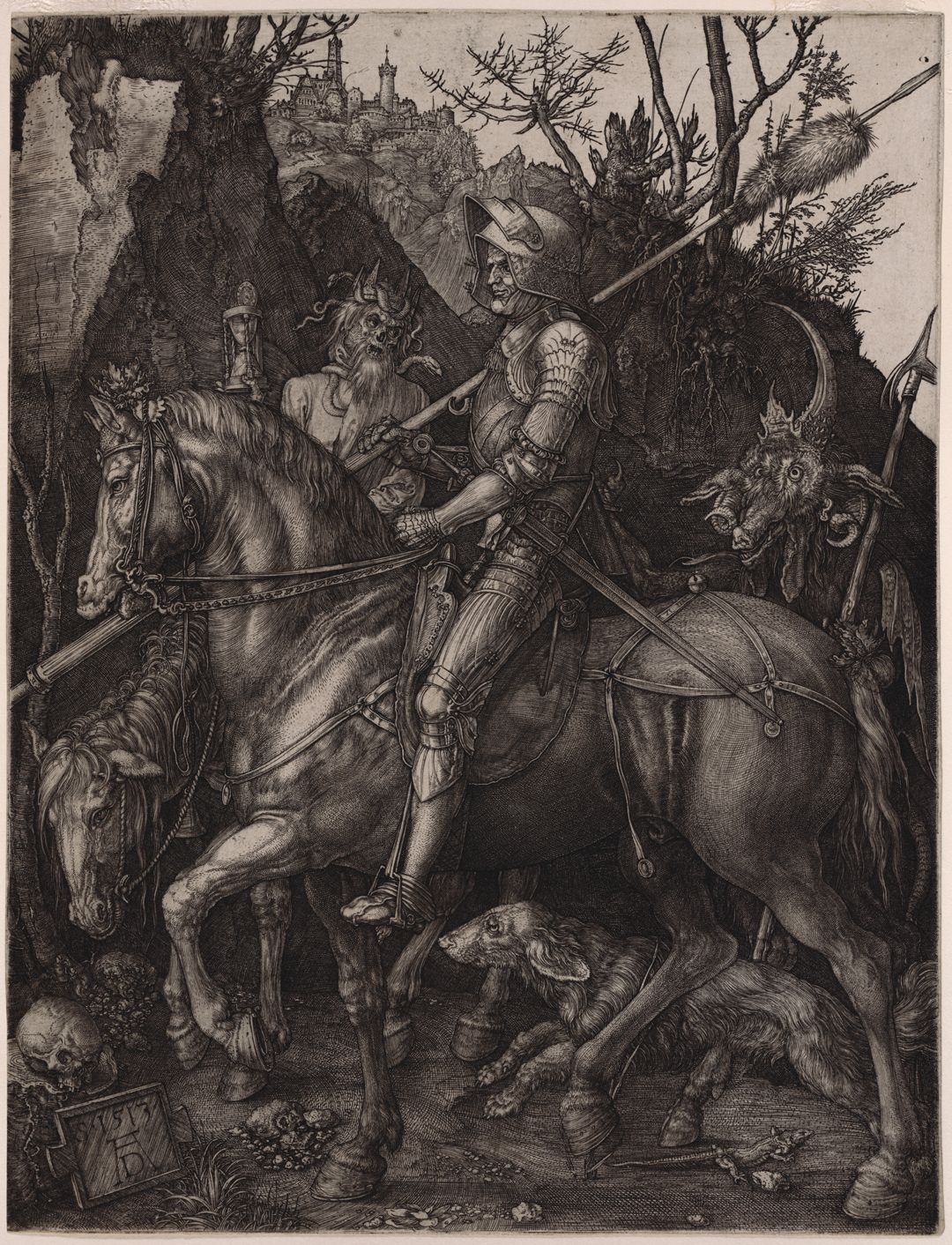
Albrecht Dürer, Knight, Death, and the Devil, 1513, engraving. Edward W. and Julia B. Bodman Collection. | The Huntington Library, Art Museum, and Botanical Gardens.
Dürer’s printmaking reached a high point in 1513–14 with three large works known as his Meisterstiche (master engravings), each of which expresses a virtue of medieval scholastic thought: Knight, Death, and the Devil (moral virtue), St. Jerome in His Study (theological virtue), and Melencolia I (intellectual virtue). In Knight, Death, and the Devil, Dürer’s hatching and cross-hatching depict the dark wooded ravine in which a wide-eyed devil and the figure of Death, seated on his pale horse, await the unsuspecting rider. If the rider can remain steadfast on his steed and not be swayed by temptations, then he will lead a moral and virtuous life, as urged by the humanist writer Erasmus of Rotterdam—whom Dürer met in his travels to the Low Countries—in Handbook of the Christian Knight (1501).
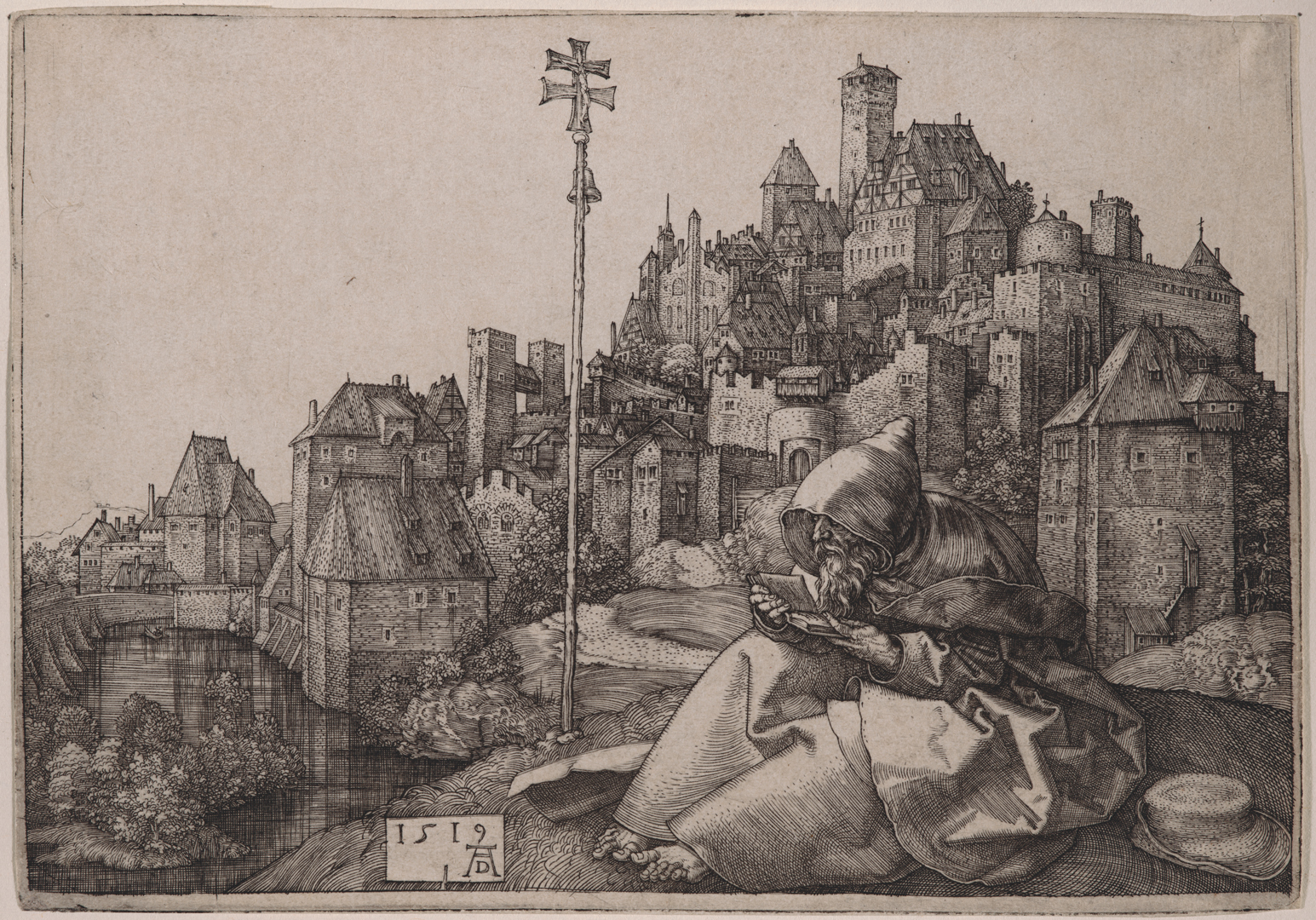
Albrecht Dürer, St. Anthony before the Town, 1519, engraving. Edward W. and Julia B. Bodman Collection. | The Huntington Library, Art Museum, and Botanical Gardens.
In the turbulent years after 1517, when Martin Luther publicly challenged church doctrine and the papacy in Rome, religious reform swept through Germany. Dürer sympathized with Luther and expressed interest in Luther’s ideas, as evidenced by his engraving St. Anthony before the Town. The figure of the lone saint reading a devotional work without an intermediary, as Luther espoused, contrasts with a medieval cityscape full of buildings and fortifications akin to those found in Dürer’s native Nuremberg. The engraving invites the 16th-century viewer to identify with the contemplative hermit who seeks direct access to God. Dürer’s wanderings in the world, which informed his art and inspired others, culminate in this work of attentive repose as a kind of spiritual homecoming.
The exhibition “Albrecht Dürer: Wanderlust” is supported by the Douglas and Eunice Erb Goodan Endowment.
Sophia Quach McCabe is adjunct professor of medieval art and architecture at California State University, Long Beach, and the guest curator of “Albrecht Dürer: Wanderlust.”
